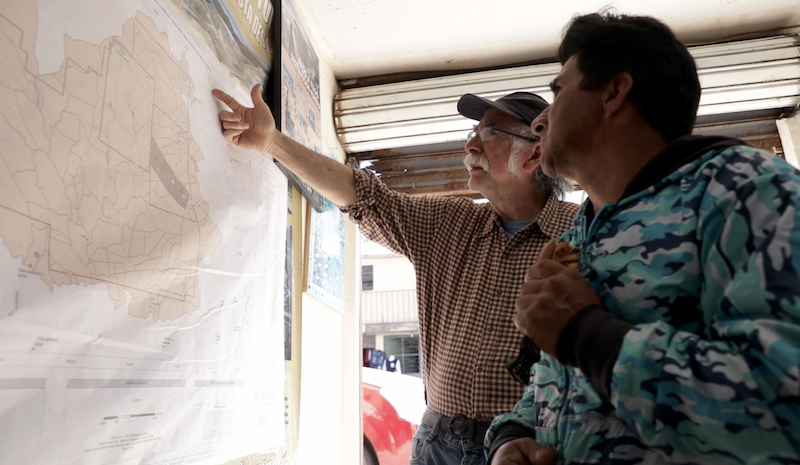- Community members in Ecuador’s Intag Valley have won a court case to stop the Llurimagua copper mining project, with the court ordering the revocation of mining licenses from Chile’s Codelco and Ecuador’s ENAMI EP.
- The Llurimagua mining concession is in the Tropical Andes, the world’s most biodiverse hotspot, home to dozens of threatened and endemic species, including two near-extinct frog species.
- A provincial court recognized that the mining companies violated the communities’ constitutional right to consultation and the rights of nature guaranteed by Ecuador’s Constitution since 2008.
- The decision is a significant win for the Intag communities, who have resisted mining for nearly 30 years, and sets an important precedent for protecting constitutional and environmental rights, as well as sends a message to investors that Ecuador is not a safe bet for mining operations.
Communities in the Intag Valley of Ecuador have won a significant legal victory after a court ruled to halt copper mining in one of the world’s most biodiverse forests.
The Imbabura Provincial Court ruled on March 29 that Chilean copper producer Codelco and Ecuador’s Empresa Nacional Minera (ENAMI EP) had violated communities’ constitutional right to consultation as well as the rights of nature, thus canceling their mining licenses.
The decision represents a major victory for communities in the Intag Valley, who have been resisting mining projects in the region for nearly 30 years in what locals say is the longest continuous resistance movement against mining in Latin America.
“It really seemed impossible to me to be able to achieve this. However, I knew that we were demanding what was fair and that we were telling the truth,” said Marcia Ramirez, a local community activist who has been part of the resistance since its inception. “We fought for the truth and for our rights, and today they are fulfilled.”

“This is another victory for the communities of Intag against mining companies that have been trying to enter the area for several decades,” Mario Moncayo, one of the lawyers representing the Intag communities, told Mongabay. “This will likely put a stop to mining activity in Intag for several years, if not permanently.”
The ruling could have significant implications for future cases involving extractive industries in Ecuador. In 2008, Ecuador adopted a new Constitution that recognizes the rights of nature, making it the first in the world to do so. This recognition means that natural ecosystems have the right to exist, thrive, and evolve. Additionally, the Constitution grants individuals and communities the right to defend these rights on behalf of nature.
Two notable other cases in Ecuador have successfully invoked the rights of nature in years past, showing that they can be used as a legal tool to protect the environment and the rights of communities.

The Llurimagua mining concession is in the Tropical Andes, the world’s most biodiverse hotspot, ranked first in plant, bird, mammal and amphibian diversity out of all 36 scientifically recognized biodiversity hotspots in the world to date.
The mining concession includes 43 headwaters of rivers and streams in primary and secondary forests. It contains rare and endangered species such as the longnose harlequin toad (Atelopus longirostris) and other amphibians found nowhere else in the world.
“This ruling means the longnose harlequin toad and other amphibians found nowhere else in the world will have a good chance at recovery and survival,” Andrea Terán-Valdez, collections manager at the Jambatu Amphibian Research and Conservation Center in Quito, told conservation NGO Re:wild.

According to several community members Mongabay spoke to, around 400 military and police officers used force to ensure the presence of Codelco and ENAMI in the mining concession.
Carlos Zorrilla, a leader in the effort to defend the cloud forests of Intag for the past 30 years, told Mongabay that officers hired by the company “violently went into the community reserve in May of 2014, after arresting local protester and leader in the resistance Javier Ramirez.”
“They stayed for months and violated fundamental human rights,” he said.
The case against Codelco and ENAMI EP was brought forward by the communities and the local environmental organization Defensa y Conservación Ecológica de Intag (DECOIN), which Zorrilla leads. They argued that the mining project would violate the rights of nature by threatening the habitat of two near-extinct frog species.
In September 2020, the Intag communities won one of the few cases upholding the rights of nature in the lower court. But the case was overturned in the higher provincial appeals court due to a procedural error.
The Intag communities presented another case in 2021, arguing for the rights of nature and attesting that the communities were not consulted about the mine, which the Constitution also guarantees. Although the communities initially lost this case, they appealed the decision. The ruling this week marks an end to this prolonged legal battle.








Moncayo said one thing that stood out about the ruling was the application of a prior case concerning the rights of environmental consultation. The Los Cedros ruling says that the state must carry out environmental consultation with the local community, and that it should happen before an environmental permit is granted. This did not take place in Intag.
The application of this case sets a precedent and “opens the door for this binding ruling to be applied in other cases,” Moncayo said.
“This ruling shows that Ecuador is a difficult destination in terms of foreign investments in the realm of extractive industries,” said William Sacher, a professor at Simón Bolívar Andean University in Quito who studies large-scale mining and its impacts. “It sends a message to investors [that] judicial institutions can make decisions in favor of communities and in their interests.”
Gustavo Redin, a lawyer with CEDENMA, a coalition of civil society organizations advocating for the rights of nature, called this win “amazing.”
“[T]his is a sentence that is for the people and for nature. It’s a win for everybody,” said Redin, who also represents the communities.

However, not everyone is celebrating. The mining companies employ more than 100 locals, and these people “will be very angry at our participation in this outcome and thus the loss of their source of income,” Zorrilla told Mongabay in an email. He said the extractive industry “works to foster dependence at the local level,” which “is not easy to overcome.”
But Zorrilla said many organizations already exist in Intag to promote sustainable livelihoods and offer alternatives to mining, including in ecotourism, coffee, and cacao farming.
What this ruling means for communities, he added, is that “their right to decide what takes place in their territories is more protected and will be more respected. A Constitutional right that, in our case, we have spent the last 28 years trying to defend.”
Yet the struggle may not be over. First, Codelco could appeal to the Constitutional Court. However, Moncayo said the lawyers don’t believe that the companies’ constitutional rights were violated in the trial, so they’re not too worried about the outcome of an appeal.

Another possibility that worries Zorrilla and others Mongabay spoke with is the threat of another company moving in.
“There is the inescapable reality that companies come and go, but the copper remains,” Zorrilla said.
“Unless we put enough pressure on the government of Ecuador, and I am counting on international support,” Zorrilla said, “it is very likely that they will sell this concession to a more unscrupulous mining company, and the nightmare and human rights abuses will restart.
“So we must strengthen the opposition,” he added, and “keep educating the local, national and international public, as well as those in power as to the drastic impacts that mining has in biodiverse and pristine forested areas like ours.”
But for now, community members are celebrating this monumental win and hoping this decision signals that mining companies will be met with a formidable fight in the Intag Valley.
“This is the sixth time a transnational mining company has had to abandon the Intag area,” Zorrilla said. “And we sure as hell hope it is the last.”
Banner image: Roberto Castro and his son look towards Junin, where Coldeco planned to open a copper mine. Photo by Romi Castagnino for Mongabay.
Liz Kimbrough is a staff writer for Mongabay. Find her on Twitter @lizkimbrough
In Ecuador, communities protecting a ‘terrestrial coral reef’ face a mining giant
FEEDBACK: Use this form to send a message to the author of this post. If you want to post a public comment, you can do that at the bottom of the page.
